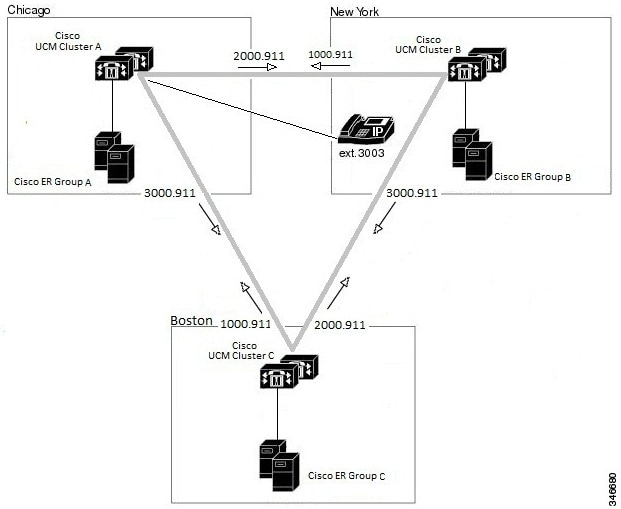Configure Cisco Unified Communications Manager Overview
This chapter describes procedures for configuring Cisco Unified Communications Manager (Unified CM) for Cisco Emergency Responder (Emergency Responder).
See the Release Notes for Unified CM versions that are compatible with Cisco Emergency Responder.
The procedures describe what you must configure in Unified CM so that Emergency Responder can work in your telephone network.
They also describe a sample Unified CM setup. The names that are chosen (for example, partition and calling search space names) are not required.
Sections with examples represent an example setup, with sample values included for reference only. Your particular configuration depends on the needs of your network and your naming strategy.
-
PhoneCSS - Includes the Phones partition.
-
E911CSS - Includes the E911 and Phones partitions.
The examples are based on a single Unified CM cluster. If you have more than one cluster, you must repeat the configuration in each cluster, except for the emergency location identification number (ELIN) translation patterns. The ELIN translation patterns are only defined in the Unified CM cluster to which the gateway sends incoming calls from the public safety answering point (PSAP).


 Feedback
Feedback